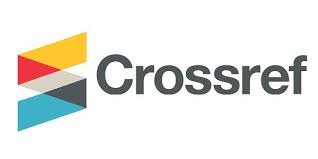IJCRR - 10(22), November, 2018
Pages: 07-13
Date of Publication: 29-Nov-2018
Print Article
Download XML Download PDF
Computer Assisted Learning in Practical Pharmacology for 2nd MBBS Students: Perception of Students and Faculty
Author: Meena Shrivastava
Category: Healthcare
Abstract:Objectives:
1. Assess impact of Computer Assisted Learning (CAL) as animal simulator in practical Pharmacology on 2nd MBBS students
2. Evaluate feedback responses of students & faculty to CAL
Methods: Study was conducted in Pharmacology department of a tertiary care hospital. Students of 2nd MBBS and faculty members of Pharmacology department of this institute participated of the in the study. CAL sessions on \"effect of drugs on rabbit eye\" were conducted using software of Animal simulator of Reed Elsevier India. Students took pre and post MCQ tests. Feedback was obtained from students and faculty through questionnaire and interviews.
Statistical analysis was done by student's 't' test (p value < 0.5)
Observations and Results: Significant improvement in performance of students was seen in post- test. Average score increased from 48% to 77% after CAL. Range of score also improved. Most of students and faculty gave positive feedback about CAL in feedback questionnaire and interviews. Most of students opined that CAL helped to improve their understanding and was enjoyable due to AV impact. Faculty felt that most of the students were motivated in session and CAL would help them to retain knowledge about drug.
Conclusion: CAL is interesting, informative and motivating. It helps students to understand concepts about practical Pharmacology. Faculty opined that CAL is a good tool and should be included in regular teaching learning of practical Pharmacology.
Keywords: CAL, Perception, MBBS students, Faculty
Full Text:
Introduction
Curriculum of Pharmacology forms an integral part of medical education. It encompasses pharmacological actions, their mechanisms, indications, adverse effects, interactions and contraindications of drugs. In the past laboratory based practical classes showing drug effects on tissues or whole animal have been main method in curriculum of practical Pharmacology for 2nd MBBS.
Animal experiments have become difficult due to problems of availability, procurement, cost, maintenance, use of animals and ethics regulations (1,2,3). Guidelines by Committee for the Purpose of Control and Supervision of Experiments on Animals (CPCSEA) and Medical Council of India (MCI), suggest ‘3 R’ i.e. Reduction , Refinement and Replacement in animal experiments, with the 4th ‘R’(Rehabilitation) added as an added measure for animal care (4,5,6). Using animals in research and experimentation has been debated and protested at different levels. Practical training with animal experiments were felt unnecessary by medical students and faculty as their learning objectives primarily focus on observational, analytical and interpretative skills, which are components of the cognitive but not psychomotor domain (7). They have been phased out in many institutes(8).
Recent years have seen revolution in training in practical pharmacology for undergraduates (UG). Innovative teaching approaches such as small group discussions, role plays, audio-visual aids and Computer Assisted Learning (CAL) have been adopted (9,10). The proposed new curriculum of MCI “Vision–2015” for undergraduates has suggested simulation labs for Physiology and Pharmacology in UG curriculum. The required knowledge and skills should be imparted by using CAL, which is mandatory equipment (11). A welcome change in MCI recommendation insists that computerized learning should be an alternative to live animal experiments (12).
Many medical colleges have started implementing such alternatives in undergraduate courses(13). This integrated multimedia software performs as animal simulators which closely mimics reality. It has computer based packages, focusing on interactive instructions in a specific subject area with a collection of animal experiments. (7). One such CAL software from Elsevier is a good alternative (14). It has been found to be a good tool for experimental Pharmacology (15, 16). The present study was planned to assess impact of CAL on students’ performance and seek the opinion of faculty and 2nd MBBS students on various aspects of CAL as a teaching learning module of practical Pharmacology.
Methods
Ethical consideration: Prior permission to conduct this study was obtained from Institutional Ethics committee. It was a prospective mixed (qualitative & quantitative) open ended observational study.
Inclusion Criteria: Students of 3rd semester of second MBBS at Tertiary Medical Institute and faculty members of Pharmacology department of author’s institute
Exclusion criteria: Students absent on scheduled date of practical session on Computer Assisted Learning (CAL) or students not willing to sign informed written consent form
Study population
Students-Second MBBS Students of 3rd semester 2nd MBBS, present on scheduled days of practical (N-132) participated in the study.
Faculty- All faculty members of Pharmacology department (N-5) participated in this study.
Study venue: Department of Pharmacology and Digital Library of institute
Study tools: 20 computers with broad band connection facility and CAL software of Animal simulation in Pharmacology obtained from Reed Elsevier India Pvt Ltd.
Documents used:
For students- Informed written consent forms, pre-test/ post-test sheets and feedback questionnaire
For Faculty- Different sets of documents were used: Informed written consent forms, feedback questionnaire and sheets of interview questions
Procedure
CAL sessions- The investigator conducted in all, 4 CAL sessions. Maximum number of students participating in any CAL session was 40. All faculty members (N-5) of Pharmacology department of institute participated in these 4 sessions. The steps of procedure and time for each are depicted in figure 1 (for students) and figure 2 (for faculty)
Introductory session: It was held a day before taking up CAL in which students and faculty members were explained to their satisfaction, the details of the procedure and contents of informed written consent form. Faculty members were already trained in CAL simulation exercise for the study. Additionally, they were explained about the format of the informed written consent and post CAL interview session.
Pre and post-tests of 10 marks having similar set of 10 pre-validated single best response Multiple Choice Questions (MCQs) were conducted for students. The questions were based on methodology, drug actions, adverse reactions and drug choices in relation to CAL experiment.
The Experiment chosen for CAL was “Effect of Drugs on Rabbit Eye”
Some modifications were done suited to local set up. The software had the inbuilt facility for pre and post -tests, but in author’s opinion, the MCQs were based mostly on methodology. Hence they were modified by author and MCQ test was conducted separately to extrapolate the findings of CAL to clinically relevant information like ADR and choice of the drugs. Two students worked on one computer. They recorded the observations in their practical journals as per the format of table in software. Table1 indicates details of drugs and parameters included in CAL. Observations recorded by one student have been shown in it as a representative sample. Thus each student had the record of his own observation for further reference. Students performed all by themselves, the CAL-animal simulator experiment as per the guidelines provided in software. Faculty members, although available at all the time of CAL, intervened only if students asked for assistance.
Separate feedback questionnaires were filled by students and faculty. Some questions were different for faculty and students. Questionnaires had pre-validated structured Questions (7 for students and 8 for faculty), responses of which had to be recorded in form of Likert scale (14,17).They had open ended questions too (3 for each group). Students were informed that revealing of identity in the questionnaire form was optional. Interview session of each faculty was conducted for 30 minutes. The responses were written in interview sheet by investigator and were countersigned after due verification by concerned faculty. To reinforce their understanding, CAL session was planned after lecture sessions on Pharmacology of autonomic nervous system and ocular Pharmacology. This created a good theoretical background for CAL session.
Statistical Analysis
Statistical analysis was done by student’s ‘t’ test (“Two-Sample Assuming Unequal Variances”). This was applied for differences in score of pre and post MCQ tests. Probability (p) value <0.05 was chosen for statistical significance. For other parameters, the responses were calculated as %. For open ended questions, common responses were pooled and expressed as % or number.
Observations and results
There was significant improvement in performance of students in post-test-average & range of scores (p<0.00005). The mean score of students in pre-test was 48.7% which increased to 77% in post-test (Chart 1).The range of score of 1-4 reduced from 39 % students (pre-test ) to 2% students in post-test. The range of score of 5-10 increased from 61% students (pre-test) to 98% students in post-test (Charts 2A and 2 B). Similarly, it was noted that the score of each student improved significantly (p< 0.0005) in post-test.
Chart 3 indicates feedback responses of students and faculty members to the structured questions in Likert scale. More than 80% students and faculty gave positive feedback (Strongly agree/agree) to questions- overall simulations being good, improvement in students’ understanding and written instructions of animal simulator being useful. They enjoyed CAL and wanted to recommend it to others. Both groups felt that session time of CAL was adequate. All students opined that they achieved their learning objectives, while all faculty members felt that students showed interest in CAL. Similarly faculty members opined that they had achieved new skills of training.
The notable responses of students and faculty to open ended questions of feedback questionnaire are summarized in table 2. The responses to questions posed to 5 faculty members in interview sessions are summarized in table 3.
The students were instructed to write the answers to 3 short questions (for all 9 drugs tested- Table 1) in form of homework after CAL. They were as follows:
-
Write mechanism of ocular action of the drug
-
Write ocular adverse effects of the drug
-
Write ocular uses of the drug
All students completed the homework to the satisfaction of faculty members.
Discussion
Are live animal experiments necessary?
It is presently felt that some students may have to perform live animal experiments, especially those aiming a career in research. But for many others, these skills are not needed. Many problems are noted with animal experiments like biological variations, time spent, number of drugs tested, difficulties in imparting skills, showing demonstrations to large number of students and overall cost (7,9,18). Ethical issues of live animal experiments have been already mentioned.
CAL is a good alternative:
Computers with audiovisual aid capabilities can be a good alternative to provide an interactive and personalized learning experience which encourages self-directed learning(8).“Use of CAL as animal simulator elevates the teaching learning process to new level of sophistication and better implementation of imparting knowledge and skills to strengthen the learning experience of students. This virtual experience gives near to real idea of experiments and bridges the gap between didactic theoretical lectures and real animal experiments”(19).
In this study, significant improvement in score of post-test in students as a group as well as individual student indicates that CAL is a good learning method to impart knowledge of experimental Pharmacology. Earlier studies have shown that the students had a better average score in CAL module as compared to the method using animals. They found that it took only 2 hours for each student to understand the whole topic of CAL (14, 20,21). In this study too, students pointed out in their feedback that time of CAL was adequate. The improvement of performance in post-test in individual student emphasizes that CAL can be a very good tool for all type of students, especially below average students. This is in agreement with study done by Kopal Sharma et al (19).
The feedback in form of questionnaire and interviews is very good method to evaluate opinion of students and faculty about a teaching learning module (9,15).They were used to seek the opinion of students and faculty about CAL. There was a positive responses from both groups (80% and above) and showed that they accepted CAL as a very good method to impart training in experimental Pharmacology. They opined that the software was good, enjoyable and its audio-visual impact helped to improve students’ understanding, clarify concepts and achieve their learning objectives. 94% and above expressed that CAL should be conducted for other experiments of Pharmacology. Students had enough time at individual level to perform CAL, as observed by faculty members. Some students (52%) in their feedback to open questions opined that CAL should be conducted for other subjects like Physiology. All faculty members felt they were satisfied and motivated to conduct CAL sessions. In the interview sessions, faculty opined that CAL had a great role to play in practical Pharmacology. Previous studies have also conducted such feedback surveys. According to their undergraduate students CAL was good, quick, effective, interesting and improved their understanding. It made them confident sinceit was time independent, had no errors and was repeatable and was self-explanatory. It could be repeated several times as per need of students in contrast to animal studies (3,13,15). However the student population of this study have not been exposed to live animal experiments. They did not get opportunity to perform repeat session of CAL due to tight schedule of teaching.
In this study feedback of faculty members(who worked on live animals in their student life) is important. It is in agreement with previous studies in which teachers opined that CAL was much better than practical animal experiments for undergraduates. The audiovisual impact clarified the topic in better manner (14,22). CAL is feasible and very effective module in Pharmacology with huge potential to change the way of teaching learning activities, as it meets majority of the learning objectives (2).
Status of CAL in Practical Pharmacology
In this study a single session of CAL with one experiment was conducted for one batch of 2nd MBBS students. It has been indicated by Lexin Wang (17) that “Timetabled CAL” is a good tool under close supervision by faculty and it is better if preceded by lectures and hand-outs. The author agrees with this view, since in present study 15% students needed help and guidance from faculty while performing CAL. These students felt time was less due to difficulty in operating software. Here faculty members suggested that 2-3 sessions of CAL per semester for each batch (6-10 in total) should be conducted. However, it may not be feasible to accommodate big batches with limited number of computers and time constraints of curriculum. Even if many students were comfortable in using computer, if students are left to themselves, some may lose time and direction of study. Though it is a module of self-study, faculty must be present during such sessions for supervision. Faculty members appreciated the contribution of CAL in improving understanding of subject, 2 members had doubt about long term benefit of CAL in Rational Use of Drugs (RUD) and its clinical extrapolation.
Earlier studies have pointed out shortcomings of CAL. Commonest reasons given by the students (92%) is that, experiment is programmed with prefixed doses, therefore the exploration with different doses is not possible. Lack of interaction with live animals was also considered as a negative point of CAL. Students opined that it didn’t teach laboratory skills(1). However, author feels that for undergraduate students of MBBS it is not necessary. In the study by Tarun Sharma et al (9), 97% students believed that the experiments on living tissue in laboratory are easier to remember. They also observed that CAL required expertise to handle technical errors related to computers and is an expensive method of teaching. In present study few students had such technical difficulties and the institutional IT team had to help them. In study by Lisha et al (7), faculties often lack time to develop skills to integrate this new method of teaching-learning strategies. On the contrary here, faculty members gave feedback that they were happy, enthusiastic and motivated to have learnt a new technique. However they were concerned about set up and availability of IT persons for all CAL sessions. Presence of dedicated IT staff is indeed necessary on days of CAL sessions and maintenance of the software and hardware.
Future prospects
CAL is student-centric tool for self-study and self-assessment. One computer per student would be ideal to enable paperless practical, use of tutorial mode and examination mode of CAL in Elsevier animal simulator. We may start with formative assessment. Present recommendations of MCI (11) is to provide minimum 1 computer for 10 students, but this enables only demonstration of CAL, which is not its ideal use. Further, such CAL should be made mandatory in summative university practical examinations. It may take quite some time to make it feasible in all medical colleges because of high initial and maintenance cost of digital library with CAL facility.
Conclusion
CAL is good replacement to live animal experiments for 2nd MBBS students. It helps the students to understand concepts of drug actions, ADR and their choice. It is an interesting study tool equally acceptable to students & faculty. It reinforces lectures and provides an enriching experience of learning. The best benefit for students is drawn if it allows personalized self-learning at their own pace, which is preceded by CAL sessions with time-tabled slots (8, 17). Faculty of Pharmacology should play vital role to insist on inclusion of CAL as an essential component of the standard curriculum of practical Pharmacology.
Acknowledgements
The author gratefully acknowledges support from Dean, Dr Vrushali Watve, Medical Director, Dr Pradeep Kulkarni, my colleagues in Pharmacology, Dr Anjali Shinde (Professor) and Ms MadhuraBhosale (Tutor), ShriAmitPatil (IT Professional), Mr.VishwasSalagare (statistician) and participant students of 2nd MBBS, 2016 batch of Prakash Institute of Medical Science and Research, Islampur.
The Author hereby also sincerely acknowledges the immense help received from the scholars whose articles are cited and included in references of this manuscript and is grateful to authors / editors / publishers of all those articles, journals and books from where the literature for this article has been reviewed and discussed.





References:
1. Ravi Babu K, A. Heraman Singh, Jayasree Palla.Computer Assisted Learning: Perception and Acceptability of Undergraduate Medical Students in Pharmacology Experiments. J. of Evolution of Medical and Dental Sciences 2015; 4(102) December 21: 16761-16764,
2. Manish Kumar, Manish Kumar, Hitesh Mishra, Pramod Kumar Manjhi, Akash Chandra, Lalit Mohan, Harihar Dikshit. Undergraduate medical students’ perception regarding computer assisted learning in experimental pharmacology Practical. Internat. J.of Basic & Clinical Pharmacol 2018; 7(3):541-547
3. Sanhita Mukherjee1, Diptakanti Mukhopadhyay2, Piyalii Das. Usefulness of animal simulator software in teaching amphibian physiology practical for 1st prof MBBS students. Journal of Contemporary Medical Education 2016; 4 (1): 21-25
4. Committee for the purpose of control and supervision of experiments in animals (CPCSEA). Available from: http:/ /moef.nic.in/ modules/ divisions/ cpcsea/[Last accessed on 2015,15Aug]
5. Badyal DK, Desai C. Animal use in pharmacology education and research: The changing scenario. Indian J Pharmacol 2014; 46:257-65.
6. Sharma T, Bala S, Garg R, Kalra J. Use of computer assisted learning as an alternative to experimental pharmacology teaching: Student’s opinion. J K Sci 2016;18: 116-8.
7. Lisha J. John A review of computer assisted learning in medical undergraduates. J Pharmacol Pharmacother. 2013 Apr-Jun; 4 (2): 86–90
8. .Baby LT, Kavalakikat JC, Abraham S, Sathianalayanan S.CAL: A modern tool for Pharmacology.Internet J of Medical Simulation. 2009; 2:2
9. Taruna Sharma, Suman Bala, Richa Garg, Juhi Kalra. Use of Computer Assisted Learning as an Alternative to Experimental Pharmacology Teaching: Student's Opinion. www.jkscience.org 2016; 18(2): 116-119
10. Sharma R, Verma U, Kapoor B, Chopra VS. Novel teaching approaches in pharmacology. JK Science 2004; 6: 172-3.
11. Minimum Standard Requirements For The Medical College For 150 Admissions Annually, Regulations, 1999 (Amended – Up To January 2018) Page 7 And 101, Published By Medical Council Of India, New Delhi
12. Vision 2015, Medical Council of India. Available from: http://www.mciindia.org/tools/announcement/MCI_booklet.pdf [Last accessed on 2015 Nov 26] : 9-22
13. Badyal DK, Modgill V, Kaur J. Computer simulation models are implementable as replacements for animal experiments. Altern Lab Anim 2009;37: 191-5.
14. Santhanalakshmi P, Oommen S, Alwar MC, Arya J. Effectiveness of computer-assisted learning as a teaching method in experimental pharmacology. Natl J Physiol Pharm Pharmacol 2018;8 (Online First). Doi: 10.5455/ njppp.2018.8.0723926072018
15. Chitra Govindaraja, Heethal Jai Prakash, Chandramouli Annamalai, Sharmila Sornam Vedhavathy. Computer assisted learning: Perceptions and Knowledge, Skills of Undergraduate Medical Students in a Malaysian Medical School. National J. of Physiol., Pharmacy & Pharmacol. 2011; 1(2): 63 – 67
16. Kuruvilla A, Ramalingam S, Bose AC, Shastri GV, Bhuvaneshwari K, Anudha G. Use of computer assisted learning as an adjuvant to practical pharmacology teaching. Advantages and limitations. Indian J Pharmacology 2001;33:272-5.
17. Lexin Wang Computer-simulated pharmacology experiments for undergraduate Pharmacy students: experience from an Australian university. Ind.J. Pharmacol. 2001;33: 280-282
18. Sonali K. Doke, Shashikant C. Dhawale. Alternatives to animal testing: A review. Saudi Pharmaceutical Journal 2015; 23: 223-229
19. Kopal Sharma, Pushpawati Jain, Shipra Jain, Chandrabhan Chandrabhan. Evaluation of Computer-assisted Learning Module for Undergraduate Pharmacology Practical Classes.Journal of Mahatma Gandhi University of Medical sciences and Technology May-August 2017 , 2, (2) P 61-64
20. Tikoo D, Gupta M. Student’s perception and experience of computer assisted learning as a teaching method in experimental pharmacology. Int J Basic Clin Pharmacol 2015;4:1168-74.
21. Nettah S. Computer assisted learning (CAL) as a teaching learning method in teaching experiment pharmacology. Int J Basic Clin Pharm 2014;3:63-5.
22. Diwanshu Sharma, PavanMalhotra. A comparison of computer assisted learning and practical animal experiment for undergraduate medical students in pharmacology curriculum - A questionnaire based study conducted in a medical college of North India. International Journal of Basic & Clinical Pharmacology 2016 Dec;5 (6):2581-2584
|






 This work is licensed under a Creative Commons Attribution-NonCommercial 4.0 International License
This work is licensed under a Creative Commons Attribution-NonCommercial 4.0 International License